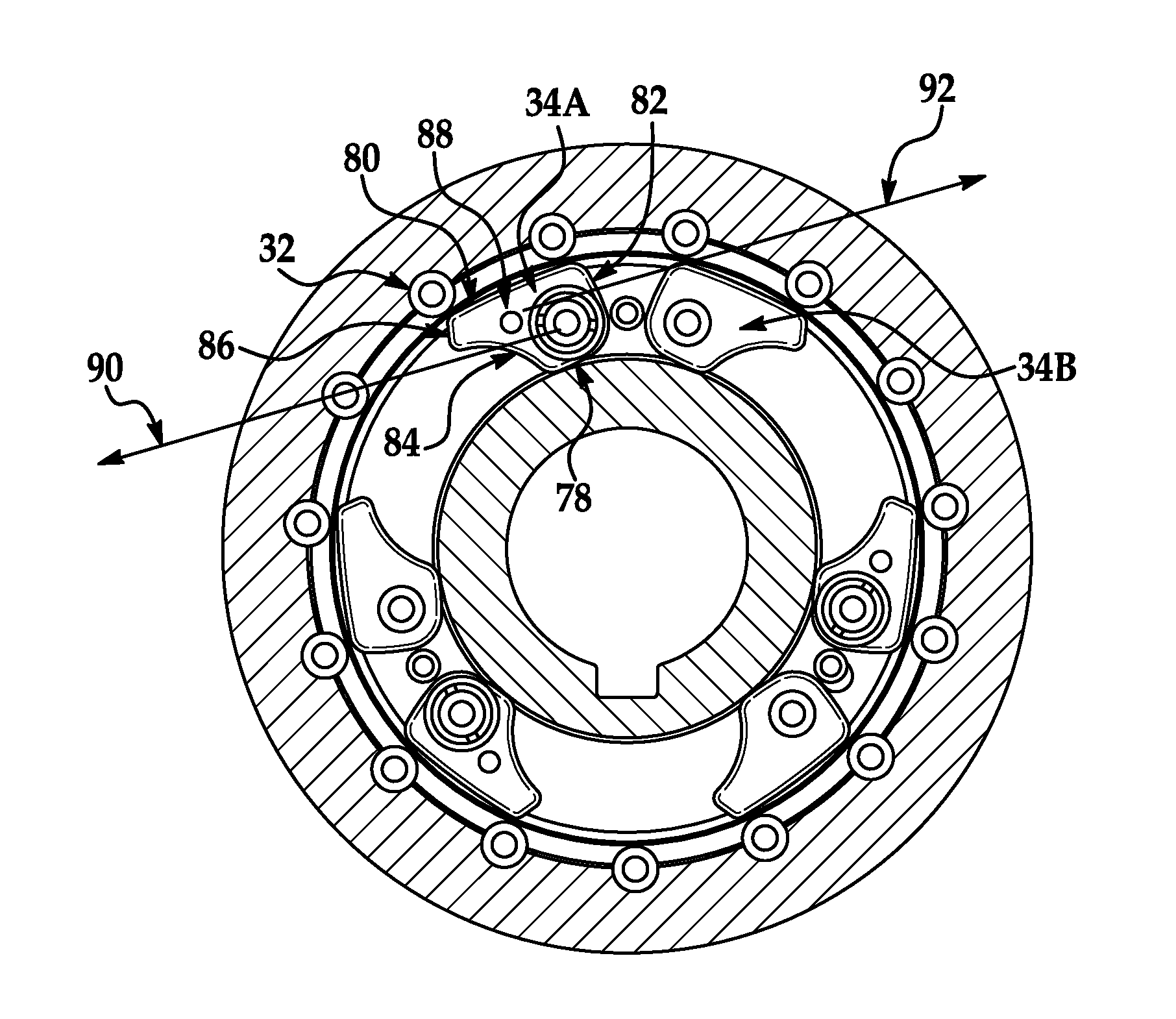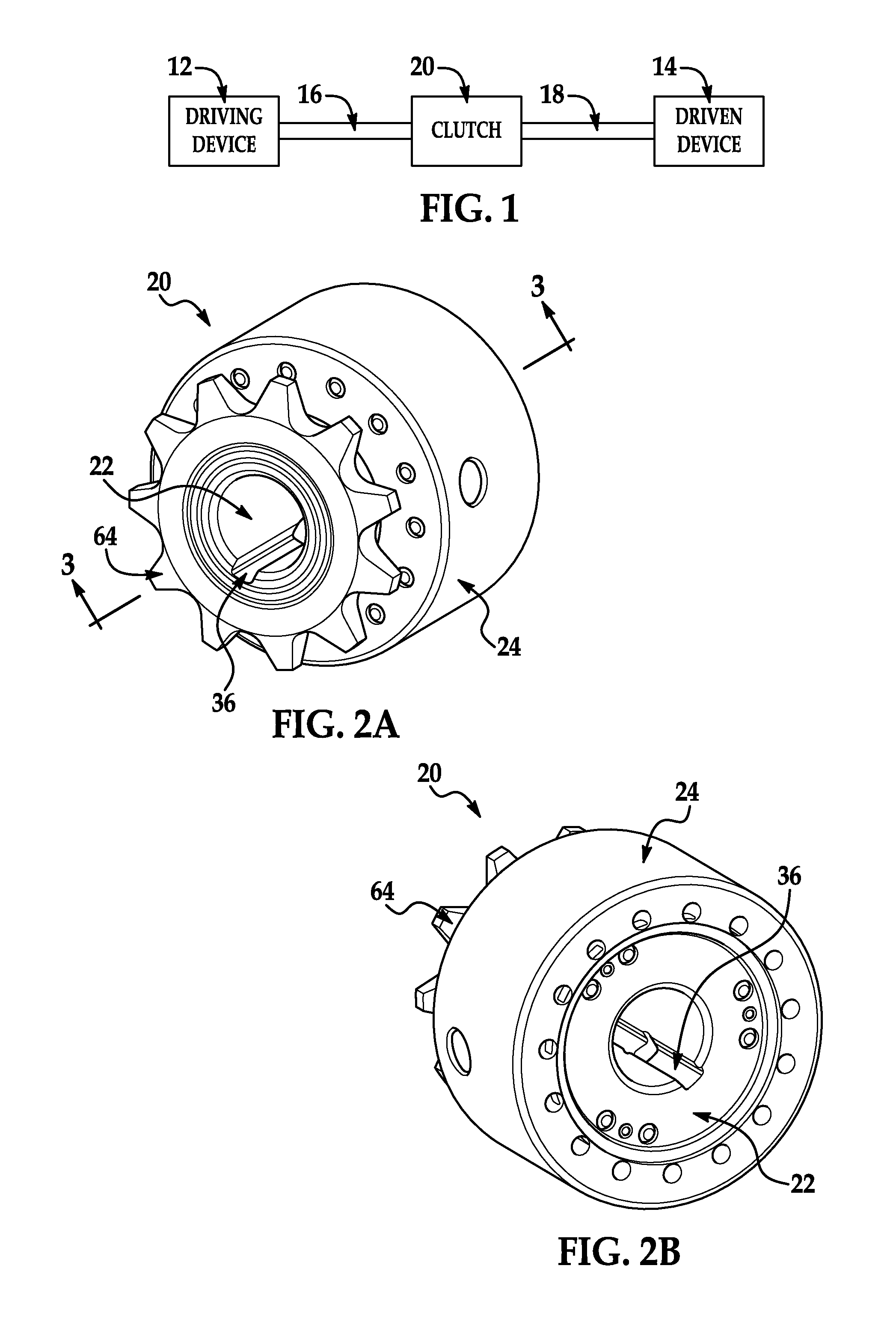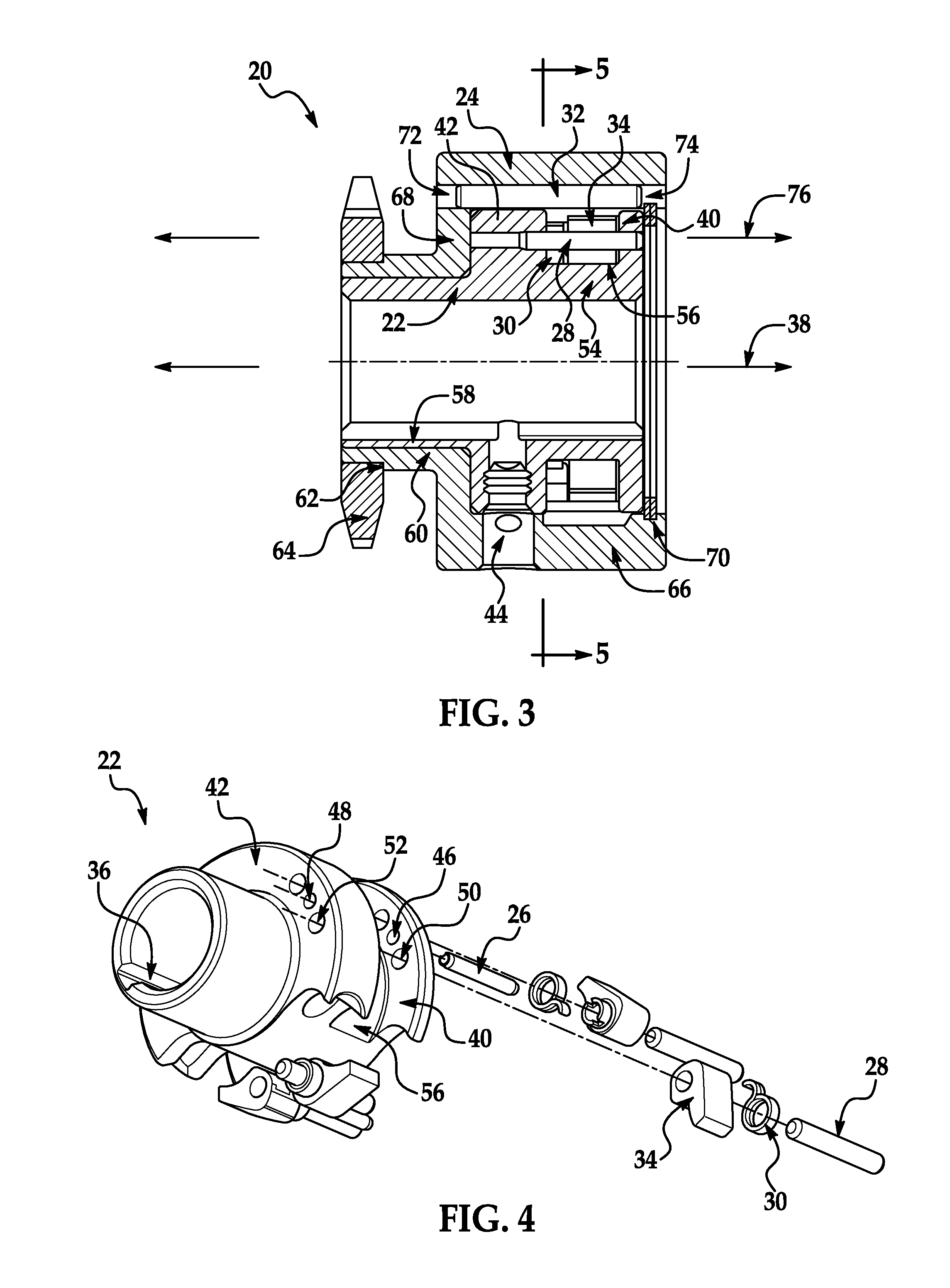Pin and pawl style bi-directional overrunning clutch
a clutch and pawl technology, applied in the direction of clutches, friction clutches, freewheel clutches, etc., can solve the problems of increasing the operating complexity and cost of the clutch, increasing the temperature of the clutch and wear on the surface of the clutch, and affecting the operation of the clutch. , to achieve the effect of improving the control of clutch engagement and disengagement, improving the clutch, and reducing the number of clutches
- Summary
- Abstract
- Description
- Claims
- Application Information
AI Technical Summary
Benefits of technology
Problems solved by technology
Method used
Image
Examples
Embodiment Construction
[0024]Referring now to the drawings wherein like reference numerals are used to identify identical components in the various views, FIG. 1 illustrates a power generation and transmission system 10. System 10 includes a driving device 12 for generating power used to drive a driven device 14. The driving device 12 may comprise a conventional motor including, for example, an electric motor, hydraulic motor or pneumatic motor. Device 12 may further include a conventional gear box or speed reducer (which may be combined with the motor to form a conventional gear motor) to control the output speed and torque delivered to driven device 14. Device 12 may output rotational torque through an output member 16 such as a shaft or another rotating body such as a gear, pulley or sprocket. Driven device 14 may comprise, for example, a conveyor or a reel on which is mounted a hose, an electric cable or a steel cable. It should be understood, that the form of device 14 will depend on the application ...
PUM
 Login to View More
Login to View More Abstract
Description
Claims
Application Information
 Login to View More
Login to View More - R&D
- Intellectual Property
- Life Sciences
- Materials
- Tech Scout
- Unparalleled Data Quality
- Higher Quality Content
- 60% Fewer Hallucinations
Browse by: Latest US Patents, China's latest patents, Technical Efficacy Thesaurus, Application Domain, Technology Topic, Popular Technical Reports.
© 2025 PatSnap. All rights reserved.Legal|Privacy policy|Modern Slavery Act Transparency Statement|Sitemap|About US| Contact US: help@patsnap.com



